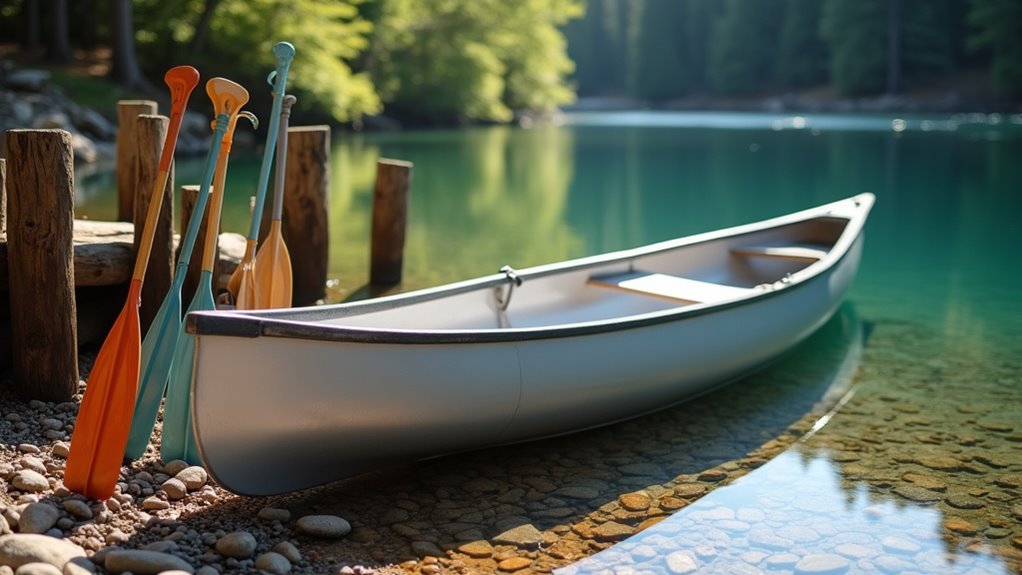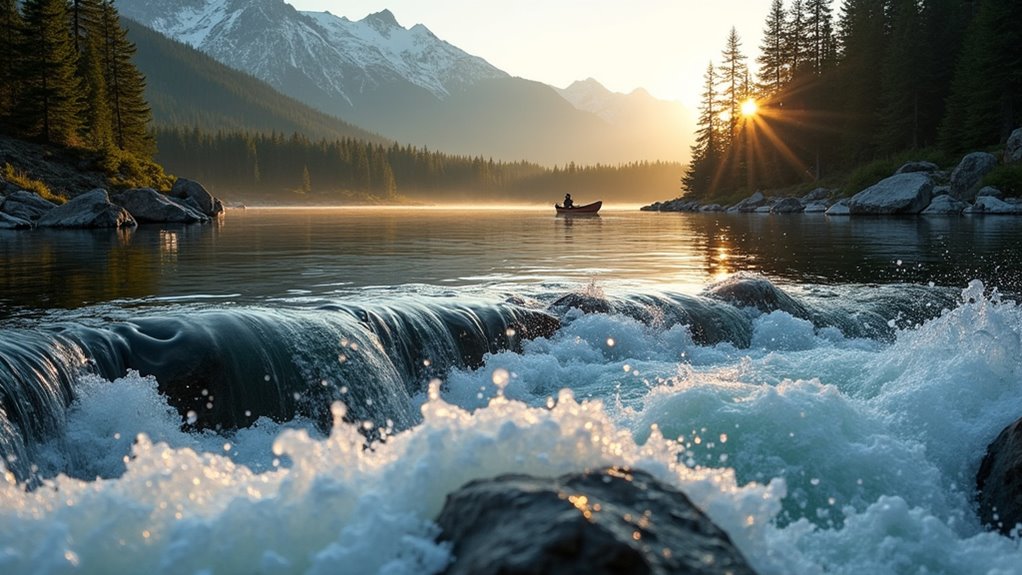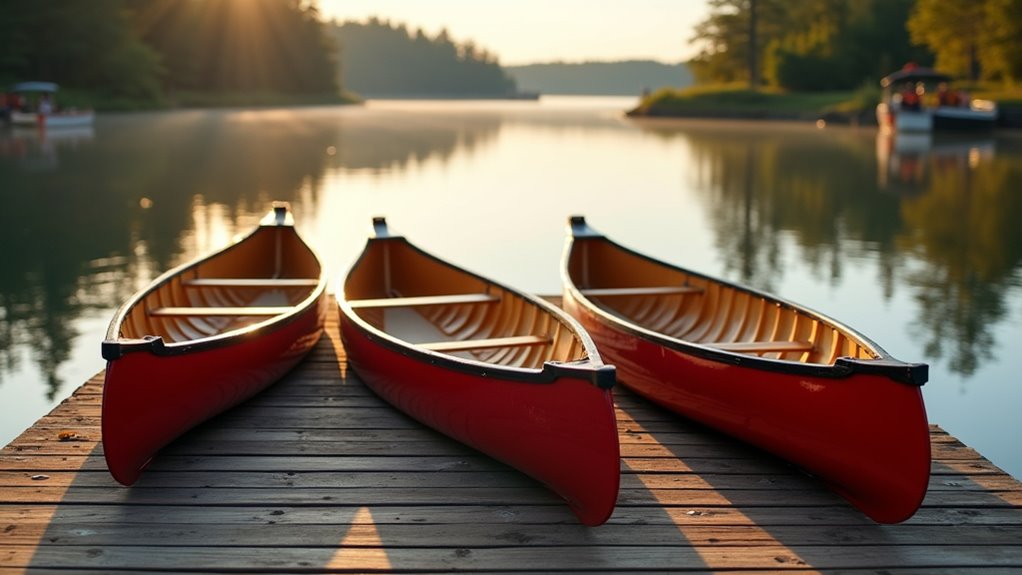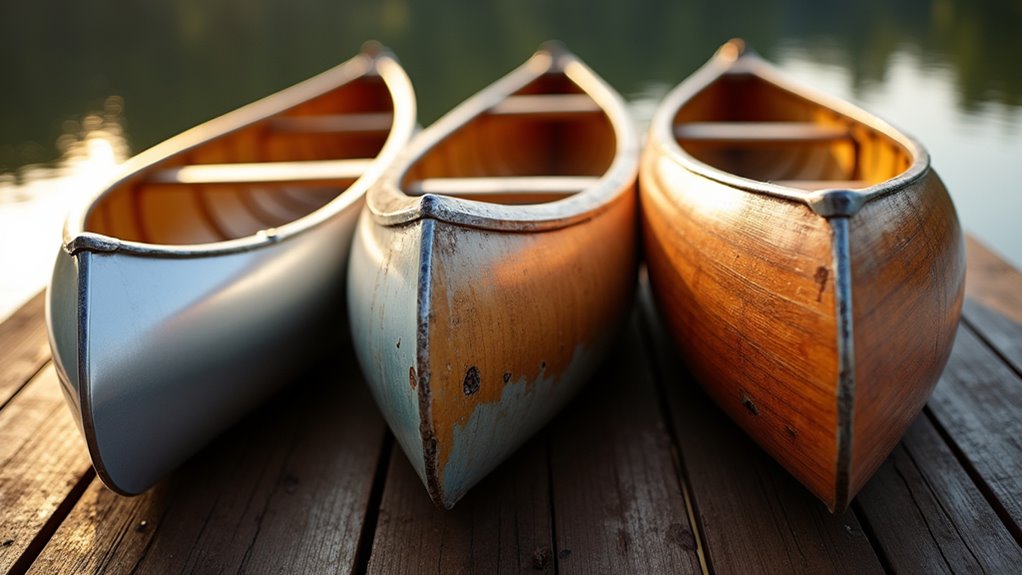Physical Address
304 North Cardinal St.
Dorchester Center, MA 02124
Physical Address
304 North Cardinal St.
Dorchester Center, MA 02124

Hundreds of canoe options exist, but these 6 crucial factors determine whether you'll love your purchase or regret it forever.
You’ll face a thousand different canoe options when you start shopping, and making the wrong choice could turn your peaceful paddling dreams into a nightmare of frustration on the water. The key isn’t finding the most expensive or popular model—it’s matching the right canoe to your specific needs and paddling style. Before you hand over your hard-earned cash, there are six critical factors that’ll determine whether you end up with the perfect vessel or an expensive garage ornament.

Where will you be paddling most often? This question shapes every canoe-buying decision you’ll make. If you’re planning leisurely lake trips, you’ll want a stable, comfortable canoe with good tracking.
Your paddling destination determines everything else—from hull shape to seating style, making this the most crucial factor in choosing your perfect canoe.
For river adventures, prioritize maneuverability and durability to handle rocks and obstacles. Ocean paddling demands a seaworthy design with high ends to shed waves.
Consider your skill level too. Beginners need forgiving, stable hulls, while experienced paddlers can handle tippier, faster designs. Think about typical weather conditions—calm mornings or windy afternoons? Will you encounter shallow water requiring easy portaging?
Your paddling style matters as well. Solo trips require different features than tandem paddling. Day trips need less gear space than multi-day expeditions. Match your canoe’s design to your actual paddling reality, not your wishful thinking.
If family camping is part of your plan, consider storage capacity for gear and how many family members will be paddling together.
Once you’ve identified your paddling purpose, the hull design becomes your canoe’s most critical feature. Different hull shapes dramatically affect how your canoe performs on the water, so you’ll want to match the design to your paddling style.
Consider these four main hull types:
The hull’s width also matters. Wider canoes offer more stability but sacrifice speed, while narrower designs track better and move faster through water. If you’re planning to explore waterways in dense forest environments, consider that some paddlers prefer jungle camping setups where they can quickly transition from water to elevated sleeping arrangements.

After determining your ideal hull design, you’ll need to choose the right dimensions to match your specific paddling requirements.
Longer canoes track straighter and move faster through water, making them ideal for lake paddling and covering distance. However, they’re harder to maneuver in tight spaces.
Shorter canoes turn more easily, perfect for winding rivers and technical paddling.
Width affects stability and speed. Wider canoes offer more initial stability, making them beginner-friendly and better for fishing or photography.
Narrower canoes paddle more efficiently and feel faster but require better balance.
Consider your typical load too. Longer, wider canoes carry more gear and passengers comfortably.
Solo paddlers often prefer 14-16 foot canoes, while tandem paddlers typically choose 16-18 foot models for excellent performance.
For extreme adventures, some experienced paddlers even transport their canoes to access remote glacier climbing locations where traditional boats cannot reach.
Beyond selecting the right size canoe, you’ll need to match its weight capacity to your actual paddling load. Don’t just consider your body weight—factor in everything you’ll carry on the water.
Calculate your total weight requirements:
Add up paddler weight, gear, supplies, safety equipment, and seasonal extras before choosing your canoe’s weight capacity.
Choose a canoe with 20-30% more capacity than your calculated total. This safety margin guarantees proper performance and stability.
Also evaluate storage space—look for built-in compartments, tie-down points, and accessible areas for organizing your gear efficiently during trips. Just like selecting kids’ backpacks, proper weight distribution and organizational features are essential for comfortable and safe adventures.

When choosing a canoe, the construction material directly impacts performance, durability, and your wallet. Aluminum canoes offer excellent durability and low maintenance but they’re noisy, conduct heat and cold, and dent easily.
Fiberglass provides smooth paddling with good speed but requires careful handling and periodic gel coat maintenance.
Kevlar delivers lightweight performance ideal for portaging, though it’s the most expensive option and needs protection from UV rays.
Polyethylene plastic is affordable and nearly indestructible but heavy and slower through water.
Wood canoes offer classic beauty and quiet operation but demand regular maintenance and careful storage.
Consider how you’ll use your canoe—recreational paddling, wilderness trips, or racing—then match the material’s strengths to your specific needs and budget constraints. Just like selecting camping gear, thoroughly research construction materials before making your purchase to ensure the best fit for your outdoor adventures.
While the canoe itself represents your largest expense, you’ll need additional gear that can substantially impact your total investment. Don’t underestimate these costs when setting your budget.
Essential accessories you’ll need include:
Consider including a reliable fire starter in your safety kit, as waterproof ignition sources are essential for emergency situations during extended paddling trips. Factor in an additional 30-50% of your canoe’s price for these necessities. Starting with quality basics prevents costly upgrades later and ensures you’re properly equipped for safe, enjoyable paddling experiences.
You’ll make a smarter canoe purchase by considering these six key factors before buying. Here’s something interesting: experienced paddlers typically spend 40% of their canoe’s purchase price on quality accessories and safety gear. Don’t skimp on this investment – proper paddles, PFDs, and safety equipment aren’t optional extras. Take time to research each factor thoroughly, test paddle different models when possible, and you’ll find the perfect canoe that’ll serve you well for years of paddling adventures.